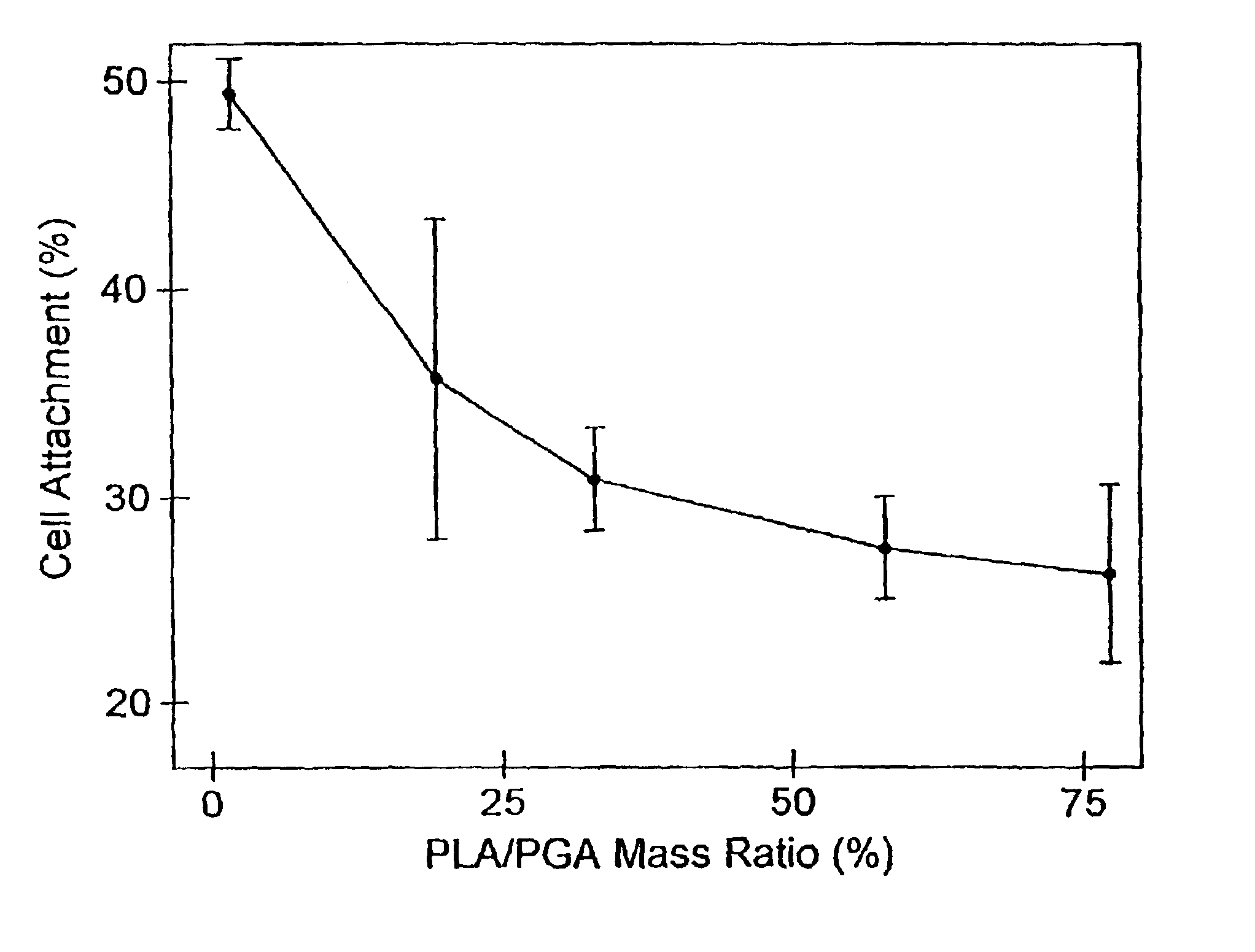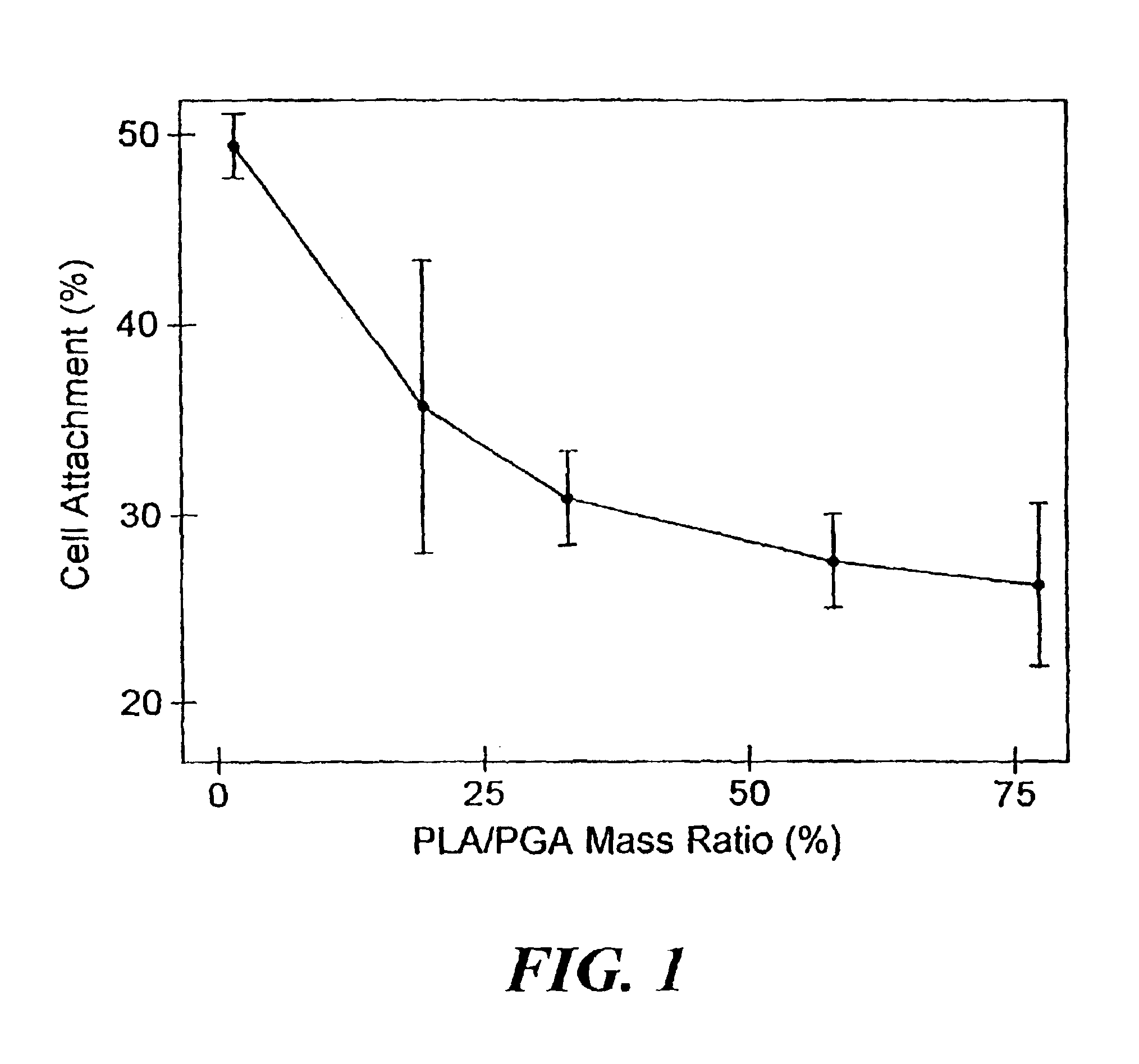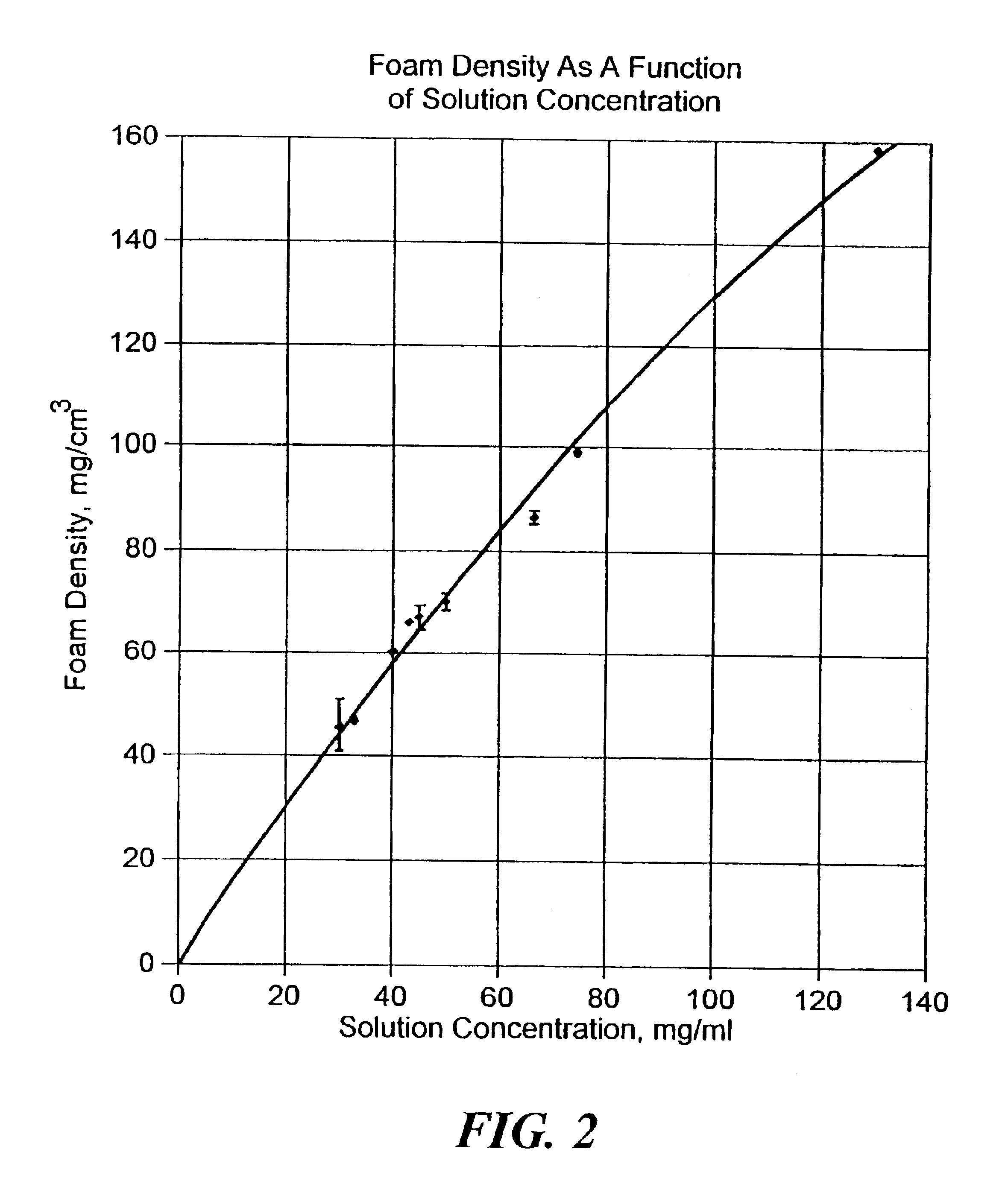Osteoinduction of cortical bone allografts by coating with biopolymers seeded with recipient periosteal bone cells
a technology of cortical bone and allografts, which is applied in the field of osteoinduction of cortical bone allografts, can solve the problems of more comprehensive examination and material improvement, large skeletal defects continue to present major challenges, and achieve the effects of reducing immune responses, improving the clinical outcome of bone grafts, and reducing the complication ra
- Summary
- Abstract
- Description
- Claims
- Application Information
AI Technical Summary
Benefits of technology
Problems solved by technology
Method used
Image
Examples
example i
Preparation of Graft Substrate Material
[0044]The graft substrate material can be any rigid, biocompatible substrate that can be prepared or formed into a suitable shape. In one embodiment, the graft substrate is a bone section from a donor, e.g., from a cadaver, which is stripped of soft tissue and periosteum and from which the marrow is removed under pressure with saline.
[0045]Another possible graft substrate material is a resorbable precured bone cement. Such a bone cement comprises a hydrolyzable biopolymer containing carbon—carbon unsaturation, such as poly(propylene fumarate) (PPF), which enables the biopolymer to undergo crosslinking with a suitable crosslinking reagent; a crosslinking agent, comprising a vinyl monomer such as N-vinyl-2-pyrrolidone; an initiator to induce crosslinking such as benzoyl peroxide; an inorganic filler of limited solubility which may serve to increase the strength of the cured cement, and may also promote healing; such as hydroxyapatite (also known ...
example ii
Coating of the Allograft Substrate with a Polymer Foam
[0050]The surface of the cured material or graft substrate may be roughened to secure better attachment of the foam. Roughening may be accomplished by mechanical means such as grinding or sanding. Alternatively, holes of less than 1 mm dia and spaced about 5 mm apart both axially and radially may be drilled radially through the bone or for some distance into the bone. The substrate may also be exposed to laser pulses for altering the surface topography. An Er:YAG laser may also be used for drilling holes either partially through or completely through the substrate in order to secure better attachment of the foam.
[0051]The additional use of laser drilling and partial demineralization in combination with tissue-engineered surface modifications should further enhance incorporation for two reasons. The demineralized bone matrix surrounding the bone allograft should provide a highly osteoinductive matrix for the ingrowth of periosteal...
example iii
Periosteal Cell Culture Model System
[0063]The approach of using recipient periosteal cells stems from the observation that these cells can be readily cultured from periosteal tissue (KOSHIHARA et al., 1989; NAKAHARA et al., 1990). In addition, they grow extremely well in synthetic polymeric, as well as in natural collagenous, matrices and are therefore recognized as an extremely osteoinductive material (UCHIDA et al., 1988). Paralleling attempts to take dermal fibroblasts for the in vitro expansion of autologous articular cartilage cells (BRITTBERG 1994), it is logical to take periosteal cells from the future recipient of bone allograft and to expand them in vitro for tissue engineering purposes. Breitbart et al. (1998) have already demonstrated the feasibility of the use of periosteal cells for tissue-engineered bone repair of calvarial defects. In analogy, a new type of tissue-engineered bone allograft, using periosteal cells of the future recipient, should show improved enhanced ...
PUM
| Property | Measurement | Unit |
|---|---|---|
| thickness | aaaaa | aaaaa |
| thickness | aaaaa | aaaaa |
| thickness | aaaaa | aaaaa |
Abstract
Description
Claims
Application Information
 Login to View More
Login to View More - R&D
- Intellectual Property
- Life Sciences
- Materials
- Tech Scout
- Unparalleled Data Quality
- Higher Quality Content
- 60% Fewer Hallucinations
Browse by: Latest US Patents, China's latest patents, Technical Efficacy Thesaurus, Application Domain, Technology Topic, Popular Technical Reports.
© 2025 PatSnap. All rights reserved.Legal|Privacy policy|Modern Slavery Act Transparency Statement|Sitemap|About US| Contact US: help@patsnap.com



